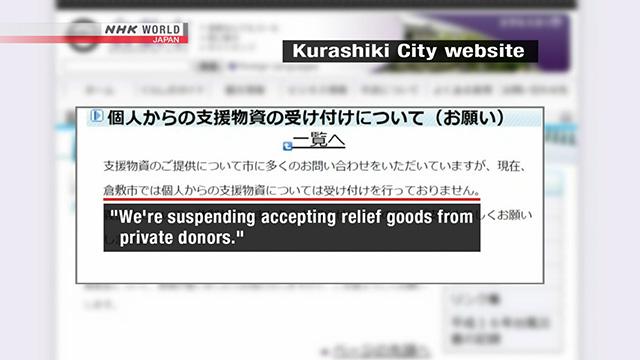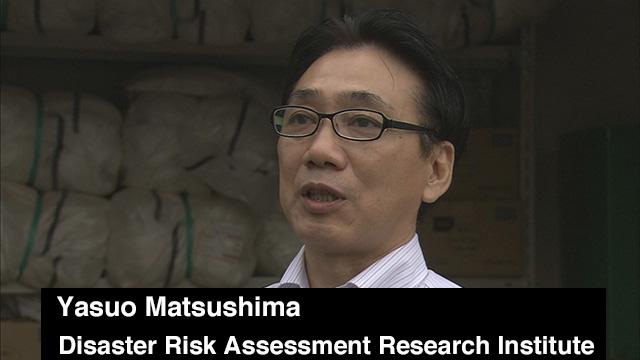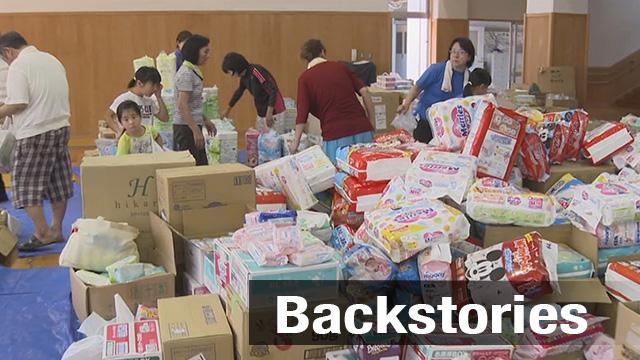Around 700 volunteers visit the city office of Kurashiki, Okayama Prefecture, every day to help with recovery efforts. Kurashiki was one of the cities hardest hit by the disaster. The volunteer center sends people where help is needed, like houses where dirt has to be cleaned up, or local offices where paperwork has to be done.
This is a common scene after a disaster strikes. But this time, the Kurashiki staff doesn't have to worry about what is usually one of the most difficult tasks: sorting out relief goods sent by private donors.

Municipalities Not Accepting Private Donor Relief
On July 10th, Kurashiki City announced it would not accept relief goods from private donors. The notice surprised a lot of people.
Other badly-hit municipalities followed suit, including districts in Hiroshima Prefecture and Seiyo City in Ehime Prefecture.
The municipalities say they don't have enough space to store the items, and, above all, they don't have the staff to handle the goods.

Pressure Caused by Relief Goods
Yasuo Matsushima of the Disaster Risk Assessment Research Institute near Tokyo is an expert on disaster logistics. He explains the municipalities' decision, saying the donations could put more pressure on the organizers' limited resources. He says this is actually a lesson learned from other recent disasters.
"At the time of the 2011 great earthquake and tsunami, a lot of people decided to send in clothes and blankets to help out," Matsushima says. "But, in fact, around 70 to 80 percent of what arrived in the later stages of recovery was discarded."

Lessons from 2011 Disaster
Matsushima explains how difficult it was sorting out tens of thousands of boxes sent by private donors from all over the country.
"They were delivered in boxes of all sizes. We had no idea what was inside," he says. "We had to open them one by one to find out if they had clothes, food, or other equipment. If a box was filled with clothes, for example, we had to sort them out for men or women and according to size. It takes a lot of effort to get the items in order and then distribute them to the right people."

Kumamoto City Mayor Kazufumi Onishi, who was in office during the magnitude 6.5 and 7.3 earthquakes in 2016, also touched on the issue.
"I really appreciate it. But tons of relief creates great confusion," he said in a tweet. He posted a photo of a line of a hundred trucks waiting 8 hours to be unloaded.

Best Way to Provide Support
"It's important not to rush to donate without checking what's actually needed," Matsushima says. "What people need changes every day -- from food, to sanitary items, to clean-up equipment. So getting up to date information is very important.
"I strongly advise contacting support groups or NGOs in the area before sending items," he adds. "People who want to help out should ask what the affected areas need, in what amount, and how long they'll be accepting goods for."

Of course, NGOs are always happy to accept cash donations, which they can direct to areas they think need it the most.
Good research will help avoid wasting time, energy, and money--and the sight of thousands of boxes piled up, untouched.

